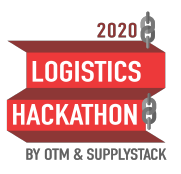INTEGRATING THE DRIVER IN THE TRANSPORT PROCESS INFORMATION FLOW DURING ROAD TRANSPORT
There are many people involved in transporting goods. The producer, the freight forwarder, the transport company, the truck driver and the recipient of the goods (trade and industry). The basic challenge is to allow everyone to view relevant, current information during the transport at any time.
TIMOCOM provides a system – the Smart Logistics System – for digital exchange of transport related information, such as order and shipment data, between all participants in the transport process. System participants can always access relevant information while the transport is in process.
In order to generate this information and provide it via the system, one of the requirements is communication between the dispatcher and the HGV driver. The HGV driver needs to be able to receive instructions, and then provide information on the transport process to the other participants.
The interests of all other participants depend on functioning communication with the driver in order to satisfy their customers and improve the quality of their service.
Currently effort is required to provide relevant information to all participants in the transport process. In closed networks, this is often solved using a unified IT configuration to allow for the exchange of data. However, TIMOCOM focuses on the open market where different business partners carry out different types of transport.
TIMOCOM has thus developed their Smart Logistics System. The system connects all participants and allows for standardised exchange of information using cloud-based applications and API-based embedding of third party systems, such as Transport Management Software (TMS).
One critical element is driver integration. This has led to the following communication challenge:
• drivers work for a variety of transport customers and have to provide them with information. The solution is often isolated applications, some of which currently use apps for communication. Due to the abundance of providers, the acceptance for additional apps that have to be installed from the App store(s) is relatively low. • The drivers are faced with using different apps, all of which have different interface designs that they have to learn to deal with. • During implementation, drivers concentrate on loading and unloading and on the road. • Drivers must be registered as efficiently as possible, as drivers change frequently and complicated onboarding and login will unnecessarily reduce acceptance levels for both dispatchers and drivers. • Drivers often only have access to their own private smartphone. • They do not always have a guaranteed internet connection. • Dispatchers want to be able to clearly and simply identify and communicate with the drivers.

